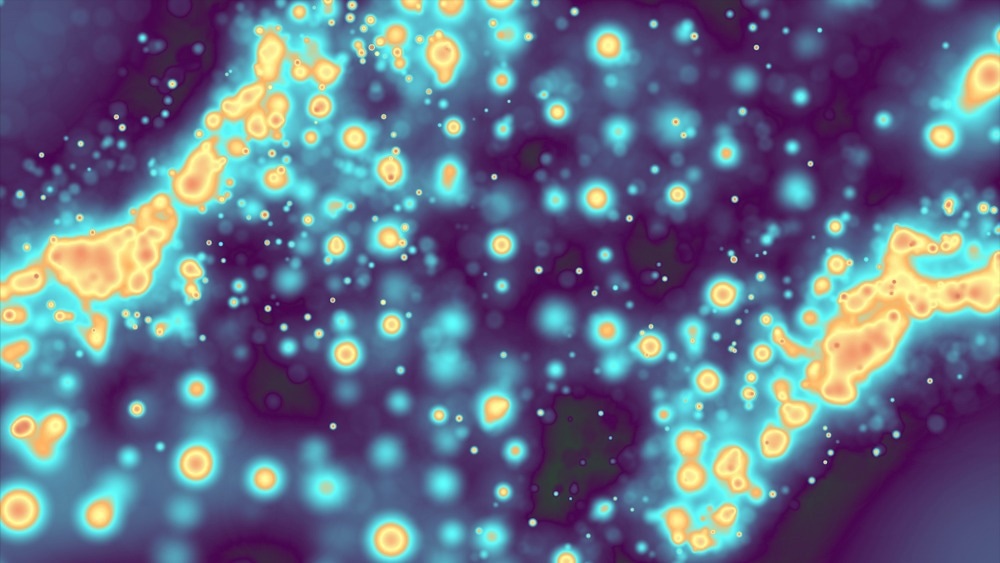Integrating two-dimensional (2D) semiconductors onto the ferromagnetic substrates paves the way to cutting-edge spintronic devices. The recent discovery of chromium germanium telluride (CrGeTe3) and chromium halides (CrX3) 2D magnets led to extensive research on new physical appearances and other practical applications.

Study: The magnetic anisotropy and spin filtering effect in ferromagnetic phosphorene. Image Credit: HaHanna/Shutterstock.com
An article published in the journal Materials Today: Proceedings presented a van der Waals heterostructure using a monolayered chromium iodide (CrI3) with layered black phosphorene (P). The prepared heterostructure was investigated for its electronic behavior through the first principle calculations.
Compared to individual components (CrI3 and P), the heterostructure (P/CrI3) had a reduced bandgap and improved magnetic nature. In continuation, the P was twisted to angles 3.22 and 3.83 degrees on CrI3 substrate, imparting the heterostructure with a new configuration, resulting in changes in band gaps. The proposed heterostructure offered a new path towards magneto-optic and spintronics due to its ferromagnetic ground state and out-of-plane magnetic anisotropy with spin filtering capacity.
2D Materials and Ferromagnetic Semiconductors
The 2D materials and their van der Waals heterojunctions offer different properties and serve as building blocks to engineer new functional materials for high-performance devices, sensors, and water-splitting photocatalysts. A tremendous amount of work has been done thus far to isolate or synthesize new 2D materials as well as to form new heterostructures and investigate their chemical and physical properties.
Graphene and 2D layered materials have opened new perspectives in electronics, optoelectronics, energy generation, and sensing applications. 2D materials can be fabricated with relatively inexpensive production methods, integrated into existing semiconductor technologies, and offer new physical and chemical properties.
The existence of intrinsic ferromagnetic semiconductors in 2D materials has been a long-term concern and pursuit. Recent breakthroughs in the 2D ferromagnetic semiconductors, such as CrGeTe3 and CrX3 (X = Cl, Br, I) from bulk down to monolayer, have stimulated intensive research on new physical phenomena and creative concepts.
Ferromagnetic semiconductors draw particular interest as these materials combine the functions of semiconductors and ferromagnetic materials, allowing the coupling and dependently controlling electronic charge and spin.
The study of 2D ferromagnetic semiconductor materials is emerging as a creative field. The rare candidates of atomically thin 2D ferromagnetic semiconductors have low Curie temperature (Tc) with scope for exploration of new physical phenomena.
Spintronics is an emerging technology that exploits the intrinsic spin of the electron and its associated magnetic moment, in addition to its fundamental electronic charge. Spintronics is used in next-generation nanoelectronic devices to reduce their power consumption and increase their memory and processing capabilities.
Magnetic Anisotropy and Spin Filtering Effect in P/CrI3 Heterostructure
In the present work, the black P was coupled with a monolayered magnetic CrI3 substrate by weak van der Waals forces to create a P/CrI3 heterostructure. The P layer was twisted to 3.22, and 3.83 degrees on the CrI3 substrate with no structural defects and distortion. The electronic and magnetic behaviors of the P/CrI3 heterostructure were analyzed.
The valence band lines around the Fermi level of twist configurations of 3.22, and 3.83 degrees were different from the 0-degree configuration. The band gap of the phosphorene/CrI3 heterostructure with 0, 3.22, 3.83 degrees twist angles were 0.23, 0.28, 0.29 electronvolts.
Moreover, these valence band lines were contributed by the p orbitals of the phosphorous atom, where py orbitals mainly contribute to 0-degree twist angle, and pz, py orbitals contribute to 3.22-degree and 3.83-degree twist angle, respectively. This suggests that the twist method was a promising strategy to tune the system.
On the other hand, the conduction bands around the Fermi level were contributed by p orbitals of iodine atoms and d orbitals of chromium atoms, whose contributions changed with twisting the layers in the heterostructure, suggesting the tuning ability of conduction bands via the twisting method.
The energy difference (∆E) between ferromagnetic and anti-ferromagnetic arrangement in P/CrI3 heterostructure explained the stability of the magnetic ground state. The ferromagnetic nature was more favorable, with ∆E of 0.05 electronvolts between ferromagnetic and anti-ferromagnetic energy states.
The transport behavior of P on the ferromagnetic substrate CrI3 was calculated by considering transmission as a function of energy at voltages of 0, 1, and 2 Volts. Although no transmission peaks were observed between 0 and 1 volts, a transmission peak in a spin–up channel at 2 volts indicated the perfect spin filtering capability in phosphorene/CrI3 heterostructure, suggesting the potential application of this heterostructure in spintronics.
Conclusion
To summarize, the magnetic, electronic, and magnetic anisotropic behaviors were determined for P/CrI3 heterostructure, twisted to angles 3.22 and 3.83 degrees through the first principle calculation method. The twisting of heterostructure resulted in the variation in orbital contribution near the Fermi level and interlayer binding energy.
The P/CrI3 heterostructure was ferromagnetic in nature, exhibiting out-of-plane magnetic anisotropy at different twist angles. The P and magnetic substrates had good spin filtering. Thus, the proposed heterostructure had a ferromagnetic ground state with out-of-plane magnetic anisotropy with good spin filtering capability, offering a novel route for future magneto-optic and spintronics.
Reference
Kumari, P., Ray, S.J. (2022) The magnetic anisotropy and spin filtering effect in ferromagnetic phosphorene. Materials Today: Proceedings. https://linkinghub.elsevier.com/retrieve/pii/S221478532205252X
Disclaimer: The views expressed here are those of the author expressed in their private capacity and do not necessarily represent the views of AZoM.com Limited T/A AZoNetwork the owner and operator of this website. This disclaimer forms part of the Terms and conditions of use of this website.